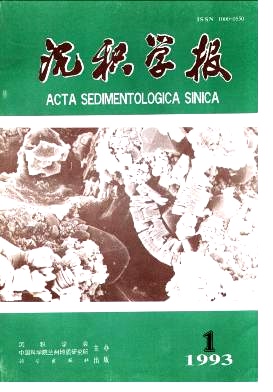Relationships Between Cyclicity and Amphipora Accumulation in the Late Frasnian Limestone near Guilin
- Received Date: 1991-03-18
- Publish Date: 1993-03-10
Abstract: The small outcrop, a part of Guilin Formation, is about 30m thick and represents a deposits from subtidal lagoon to tidal flat in the carbonate platform. Its fossils are characterized by Amphipora sp. (or Paramphipora sp.), Tenticospirifer and the fossils of its equivalent beds are marked by Ozarkodina poster, Icrious alternants alternatus, 1. a. helmsi , indicating a late Frasnian age. Microfacies analysis revealed that limestone bearing Amphipora sp. in the upper member of Guilin Formation forms the cyclic deposits. These cycles are mainly composed of three microfacies. 1. Gastropod wackestone 2. Twing-like Amphipora and spherical stromatoporoid packstone 3. Spherical, hemispherical and irregular stromatoporoid packstone. Biofacies characteristics of the outcrop show three main fossil assemblages in each cycle: 1. Gastropod fossil assemblage 2. Amphipora, gastropod and brachiopod fossil assemblage 3. Spherical, hemispherical and irregular stromatoporoid assemblage. According to the observation in the field and under the microscope, Amphipora taphocoenosis in the study outcrop exhibit many allochthonos characters. The conclusion is that the subtide with slightly fluctuated water is best suited for Amphipora growth, and the completely restricted and euxinic lagoon is not beneficial to their growth and only fit to be accumulated instead.
| Citation: | Sben Jianwei. Relationships Between Cyclicity and Amphipora Accumulation in the Late Frasnian Limestone near Guilin[J]. Acta Sedimentologica Sinica, 1993, 11(1): 103-110. |






 DownLoad:
DownLoad: